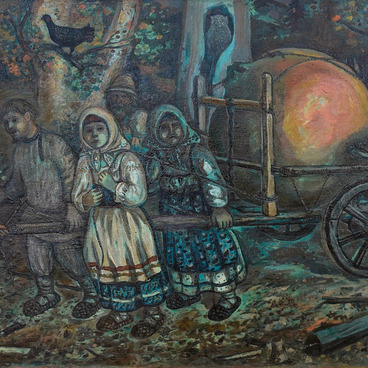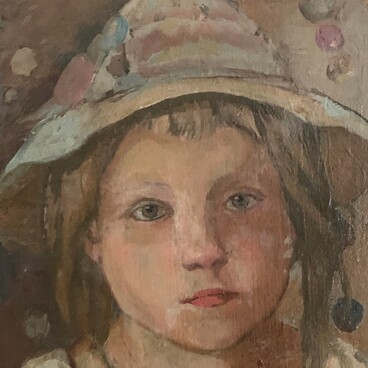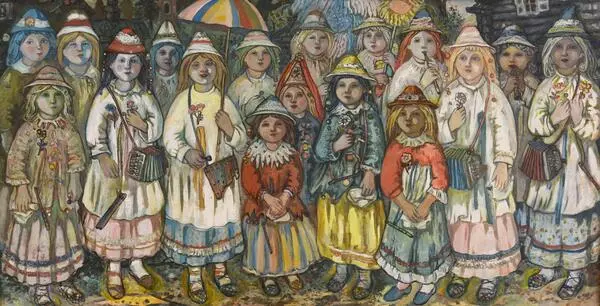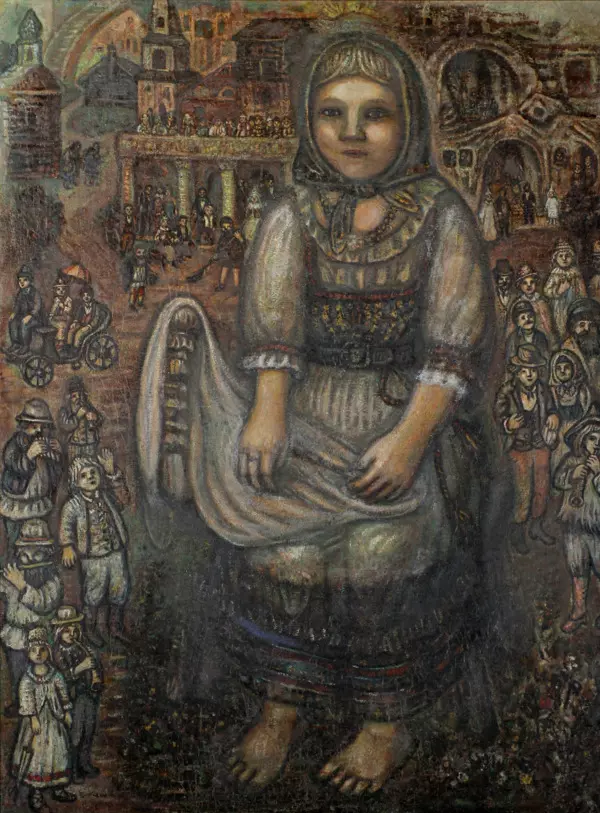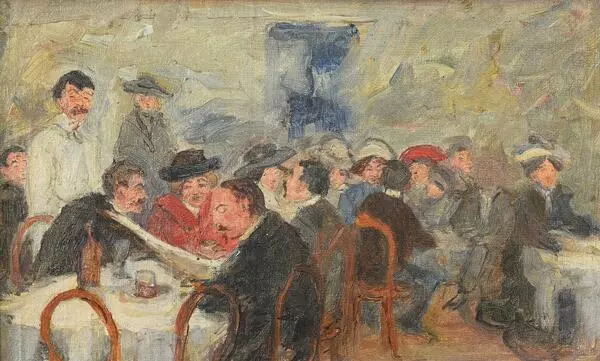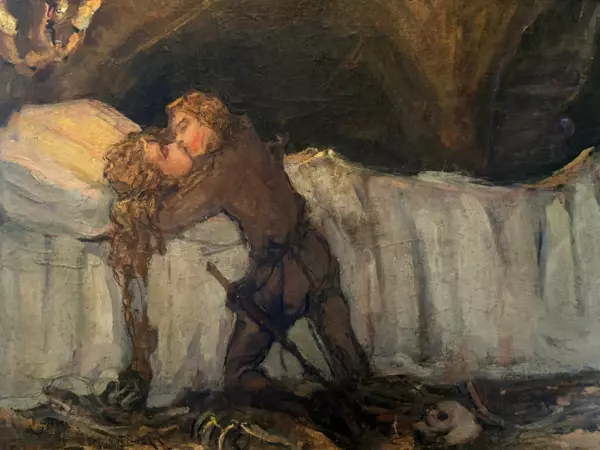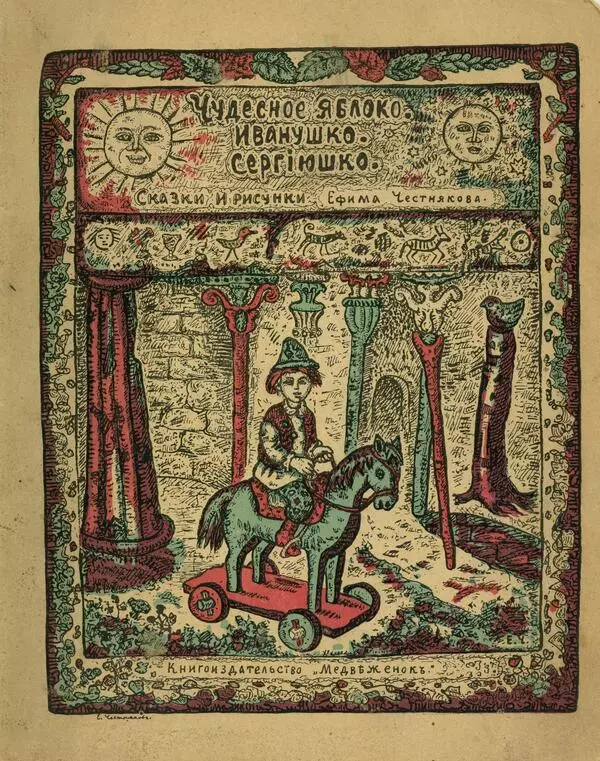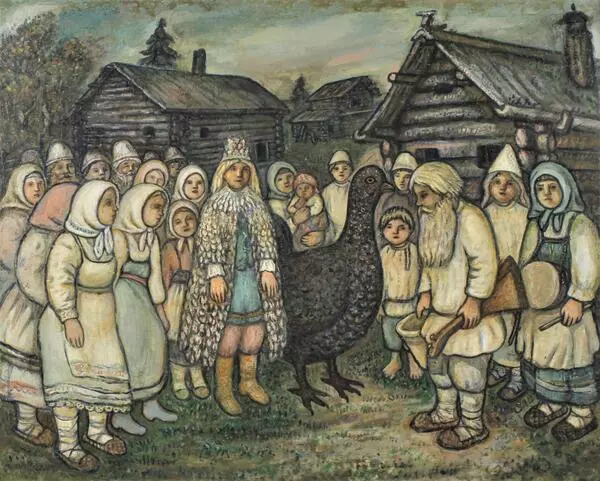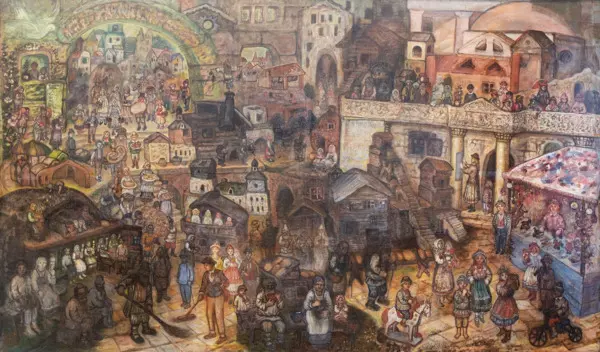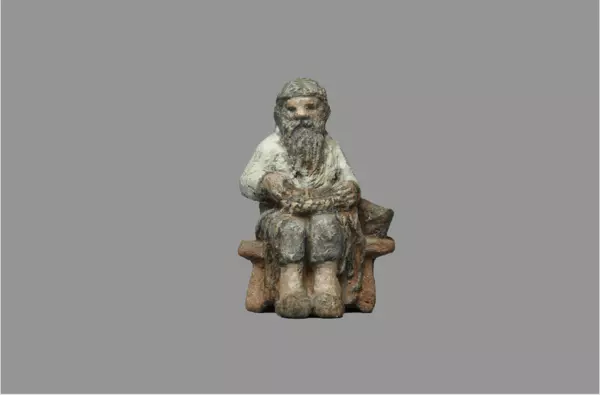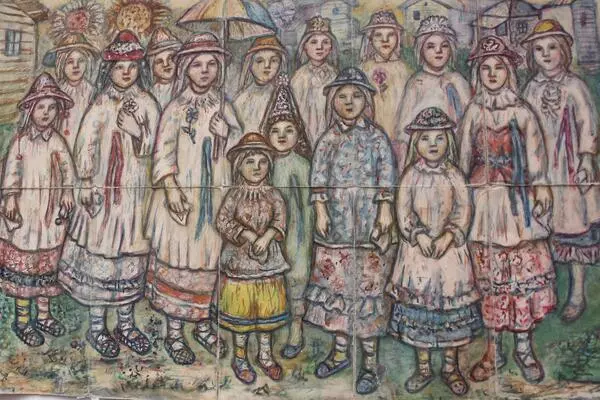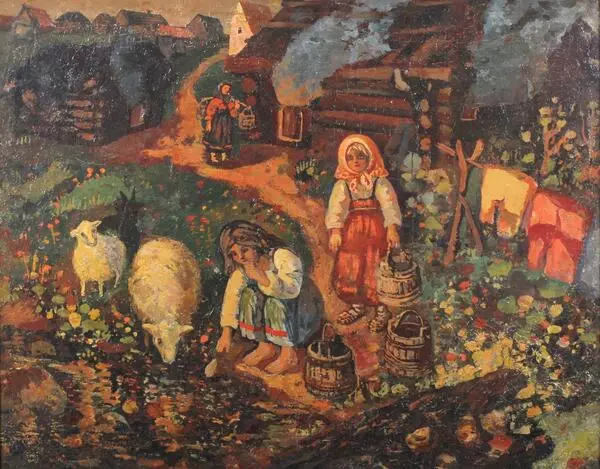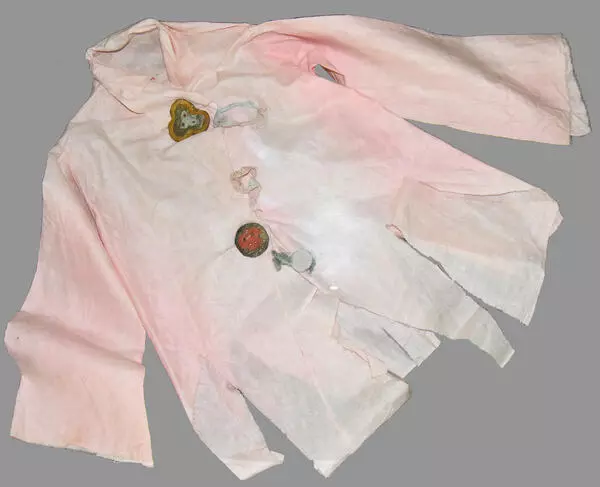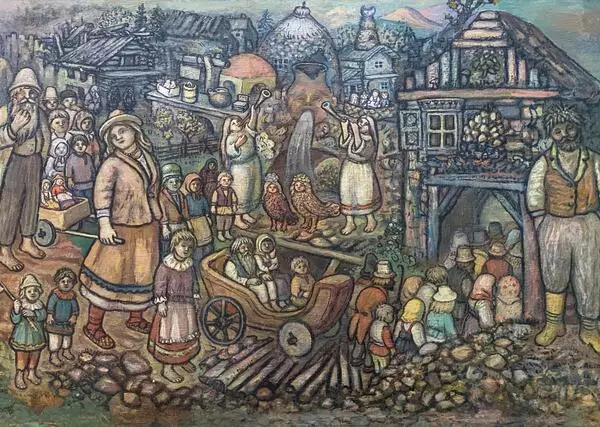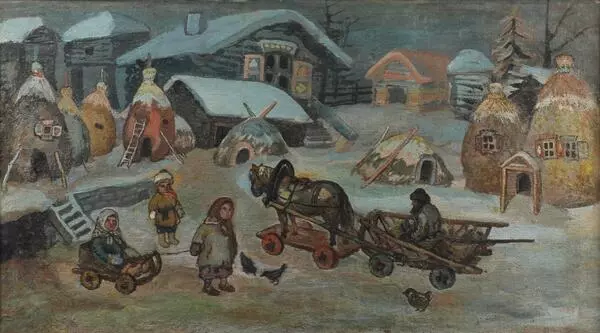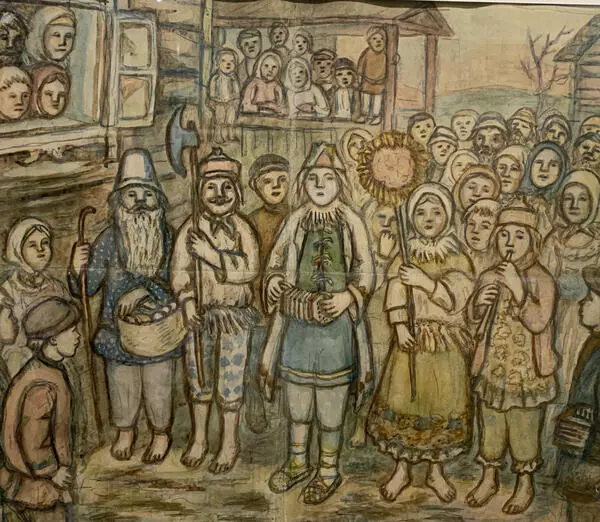A fairly small in size portrait differs from Yefim Chestnyakov’s other paintings by the manner it was created (as if it were a study). The artist depicted the woman’s tanned face, framed by a black kerchief, using broad, free strokes. A painter of our times could envy such an effortless style. The wrinkles near her lips are clearly delineated, and the deep lines on her forehead are indicative of a hard life and its difficulties. Shimmers of light accentuate size. The elderly woman’s emotional state is depicted surprisingly vividly. The open, wide-eyed gaze of her grey eyes conveys her inner calm and tranquility, it is neither passionate nor emotional. Such an expression is typical of people who are worldly and spiritual. Despite the fact that the portrait is painted in predominantly darker hues, the woman looks like an enlightened being. The dark dress with its white lines is very prominent against the light background. One can feel that the painting of old woman Vasilisa was created with great love. She must have been dear to the artist. In all likelihood, she sat for this portrait. Yefim Chestnyakov portrayed her as an individual, and yet, features characteristic to women from his region are evident in the portrait. Most importantly, he was able to convey an all-encompassing image of a courageous and serene Russian peasant woman via his work.
A kind, wise old woman (referred to as a “starukha” by the populace) was a frequent character in Yefim Chestnyakov’s literary works. His mother and grandmother, the memory of whom he cherished his entire life, must have inspired such an image. In a letter to Ilya Repin, the artist wrote ‘During my early childhood, my grandmother had the greatest influence on me. She told many tales about the ancient past, something that she loved and could convey well in words. My grandfather was an expert at telling us about his adventures - how he went to Saint Petersburg (over 1,000 km away) on foot twice as a deputy appointed by the men in the village to make formal requests to a nobleman. He also evaded soldiers, etc. My grandfather also told us fairy tales, I will never forget how marvelously he did that. I also listened to my mother’s tales with their melancholy themes. Our father used to read Psalms out loud to us before festive days. The poetic words of my grandmother lulled, of my mother — moved, of my grandfather — inspired and of my father — soothed’. The purity of soul and beauty of old woman Vasilisa conveyed by her portrait appears to immortalize, via art, a Russian peasant woman.
A kind, wise old woman (referred to as a “starukha” by the populace) was a frequent character in Yefim Chestnyakov’s literary works. His mother and grandmother, the memory of whom he cherished his entire life, must have inspired such an image. In a letter to Ilya Repin, the artist wrote ‘During my early childhood, my grandmother had the greatest influence on me. She told many tales about the ancient past, something that she loved and could convey well in words. My grandfather was an expert at telling us about his adventures - how he went to Saint Petersburg (over 1,000 km away) on foot twice as a deputy appointed by the men in the village to make formal requests to a nobleman. He also evaded soldiers, etc. My grandfather also told us fairy tales, I will never forget how marvelously he did that. I also listened to my mother’s tales with their melancholy themes. Our father used to read Psalms out loud to us before festive days. The poetic words of my grandmother lulled, of my mother — moved, of my grandfather — inspired and of my father — soothed’. The purity of soul and beauty of old woman Vasilisa conveyed by her portrait appears to immortalize, via art, a Russian peasant woman.


